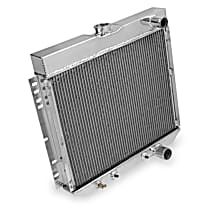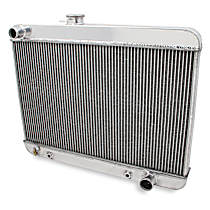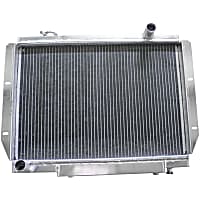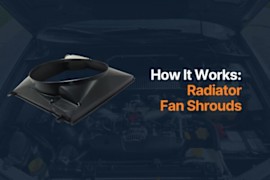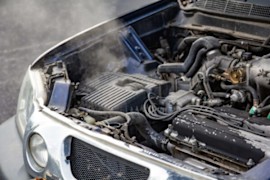Jeep CJ5 Radiators
Shop Catalog
![]() WARNING: This product can expose you to chemical which is known to the State of California to cause cancer and birth defects or other reproductive harm. For more information go to www.P65Warnings.ca.gov.
WARNING: This product can expose you to chemical which is known to the State of California to cause cancer and birth defects or other reproductive harm. For more information go to www.P65Warnings.ca.gov.
![]() WARNING: This product can expose you to chemical which is known to the State of California to cause cancer and birth defects or other reproductive harm. For more information go to www.P65Warnings.ca.gov.
WARNING: This product can expose you to chemical which is known to the State of California to cause cancer and birth defects or other reproductive harm. For more information go to www.P65Warnings.ca.gov.
![]() WARNING: This product can expose you to chemical which is known to the State of California to cause cancer and birth defects or other reproductive harm. For more information go to www.P65Warnings.ca.gov.
WARNING: This product can expose you to chemical which is known to the State of California to cause cancer and birth defects or other reproductive harm. For more information go to www.P65Warnings.ca.gov.
![]() WARNING: This product can expose you to chemical which is known to the State of California to cause cancer and birth defects or other reproductive harm. For more information go to www.P65Warnings.ca.gov.
WARNING: This product can expose you to chemical which is known to the State of California to cause cancer and birth defects or other reproductive harm. For more information go to www.P65Warnings.ca.gov.
![]() WARNING: This product can expose you to chemical which is known to the State of California to cause cancer and birth defects or other reproductive harm. For more information go to www.P65Warnings.ca.gov.
WARNING: This product can expose you to chemical which is known to the State of California to cause cancer and birth defects or other reproductive harm. For more information go to www.P65Warnings.ca.gov.
![]() WARNING: This product can expose you to chemical which is known to the State of California to cause cancer and birth defects or other reproductive harm. For more information go to www.P65Warnings.ca.gov.
WARNING: This product can expose you to chemical which is known to the State of California to cause cancer and birth defects or other reproductive harm. For more information go to www.P65Warnings.ca.gov.
![]() WARNING: This product can expose you to chemical which is known to the State of California to cause cancer and birth defects or other reproductive harm. For more information go to www.P65Warnings.ca.gov.
WARNING: This product can expose you to chemical which is known to the State of California to cause cancer and birth defects or other reproductive harm. For more information go to www.P65Warnings.ca.gov.
Popular Products
Customer Guides
Tips to Keep the Jeep CJ5 Radiator in Good Condition
The Jeep CJ5 is an interesting off-road vehicle that gives you that genuine adventure. It is compact yet very capable, simple but very functional. These qualities make the Jeep the vehicle of choice for those that go out exploring the deserts in Nevada and Utah among others. But with the kind of heat and stress that these places offer, it can be hard to keep the engine running cool. The Jeep CJ5 radiator will be working full time in instances like this. It needs to continually circulate the coolants to the entire system with precision. If not, it is highly possible that your engine will begin to heat up and stall. To avoid that, you should know how to take care of the radiator. Here are some maintenance tips that you should take into consideration.
- Monitor the coolant level in your reservoir regularly.
You should monitor the coolant level in your radiator reservoir regularly. By doing so, you make sure that there is enough amount of radiator coolant circulating in your system. If the radiator coolant runs low, you risk overheating your engine when subjected to continuous driving. When you already see that your coolant is running low, it would be wise that you replenish the reservoir with the correct mixture of coolant and water. You avoid hurting your engine and your radiator if you are diligent on this matter.
- Always make sure that the pipes, connectors, and other components are sealed well.
You should know by now that your radiator's capabilities rely on effectively circulating the coolant throughout your Jeep's engine system. It is therefore recommended to keep an eye on all pipes, connectors, and other components responsible for this flow. You should make sure that they are all sealed to avoid the coolant from leaking and prevent particles from contaminating your system. In both cases, your radiator will suffer if not spotted right away.
- Do a radiator flush for a rejuvenated cooling system.
We recommend that you do a radiator flush after your Jeep CJ5 has clocked in enough miles on the road. This will keep the system healthy and free from debris.
You drove out on a hot summer day in hopes to have fun on the trail. The destination was just the perfect spot for your adventure. There were ruts, boulders, mud, and a river. What else should you ask? Before the day set in, you already had a quick lunch and rest to provide yourself energy as you drive home. The summer's heat was exhausting, but you have always known that it was part of the adventure. You kept yourself hydrated to last an entire day out there. However, your Jeep CJ5 begs to differ. With the hard work it had put into getting you to your favorite trail combined with the heat, it demanded rest. While the Jeep CJ5 radiator did its part, you knew very well that you have to let it cool down. More than that, you should know how to watch out for the red flags that might come up as you use your vehicle. Here are some tips to help you diagnose and troubleshoot Jeep CJ5 radiator issues.
Religiously monitor your temperature gauge when are driving.
You should stay good friends with your temperature gauge. This gauge in particular is helpful in spotting potential problems with your Jeep CJ5 radiator. When the needle begins to move toward the high point of the gauge, it signals that your radiator is already having a hard time doing its job. When it is always trying to reach the highest point at the gauge, you should have the condition of your radiator inspected.
Watch out for the level of your radiator coolant.
The contents of your radiator coolant reservoir will eventually go down in increments as you use your Jeep CJ5. This is normal and you will just have to replenish it with the right amount of water and coolant mixture. However, you should still regularly keep an eye on the level of your reservoir. If the content goes down pretty fast, your radiator might be suffering from plumbing issues and leaks. Refill your reservoir and observe how fast it empties itself. It is also advisable to consult a mechanic.
Execute a pressure test on your radiator.
Doing a pressure test on your Jeep CJ5 radiator can help you identify if there are any leaks in your system. This test can pinpoint the integrity of your pipes, core, and radiator cap.





